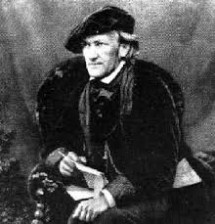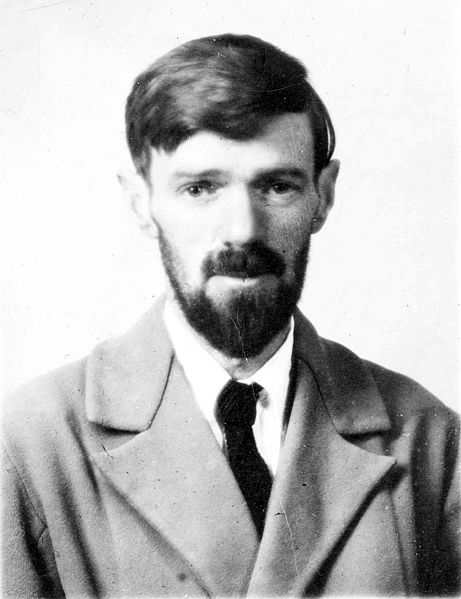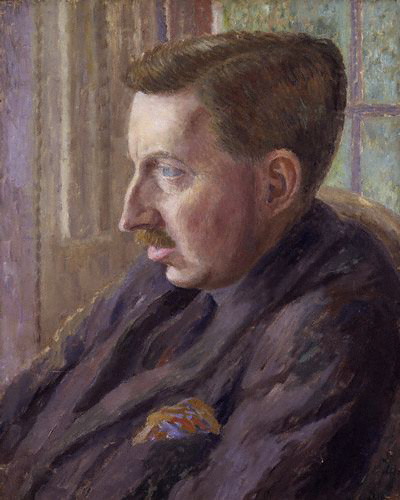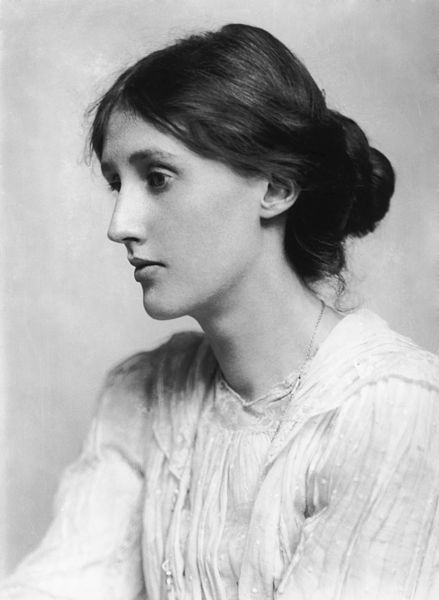Richard Wagner and the Modern British Novel

"Let's see what he makes of this brief..."
(by John Louis Di Gaetani) (1978)
When P brought this obscure little tome at the Paradise Bookshop, L asked, not unreasonably, “What has Wagner to do with the modern British novel?” Oh ye of little faith and so many brains! Well, let’s see….
In this book, Dr Di Gaetani mounts the case that the operatic works of Wagner, and in particular the poetry and prose in his librettos, had a vital galvanising effect on five major British novelists maturing (if not all necessarily in their prime) during the Edwardian Age: Joseph Conrad, D.H. Lawrence, E.M. Forster, Virginia Woolf and James Joyce.
P read this book as a juror and naturally, as a juror, he brought all of his common sense, life experience and basic fairness to the task, as well as his endogenous prejudices. That said, the prosecution case can be summed up thus:
Wagner was white hot in the 1890s and early 20thC in the United Kingdom – check. The five authors under consideration were “very much interested in opera.” He suggests that the allusions, themes, images and symbols deployed by Wagner in his operas – what he calls Wagnerian patterns – are used by the authors “in a peculiarly modern way”.
Di Gaetani continues with a sensible concession: “Joseph Conrad was not a Wagnerian in any strict sense of the word.” Nevertheless, he sets himself the task of proving that “Wagner’s operas had a subtle and profound influence upon Conrad’s fiction.” The evidence comprises passing references in a couple of letters and some dubious parallels: e.g. the Curse of Gold (The Ring) vs. the Curse of Silver (Nostromo); Land vs. Sea in The Flying Dutchman and Chance. In a short story, “Freya of the Seven Isles”, the protagonist picks out some Wagner tunes on a piano. These are very long bows and despite the detailed and quite incisive discussion of a number of Conrad’s books, Di Gaetani’s heroic case collapses.
With D.H Lawrence, one is on safer ground we guess – an obscure 1912 novel, The Trespasser is discussed in depth; a woman has an affair with violin teacher Siegmund, who kills himself. Wagnerian references abound, and we concede this one, but since it is D.H. Lawrence, who cares?
 Certainly E.M. Forster was a Wagnerite and he did draw linkages ‘twixt music and fiction, but Di Gaetani’s case here is shaky. References to Wagner sprinkled through the novels are seized and shaken by the throat but most unpersuasively, the author cites tropes used in Where Angels Fear to Tread, The Longest Journey, Howard’s End, and A Passage to India, suggesting they are leitmotifs. This is akin to ‘only connecting’ the sculpting of a play by, say, Terence Rattigan, with Gaudi writing a description of a new building – they are similar creative processes, in differing mediums. Case dismissed.
Certainly E.M. Forster was a Wagnerite and he did draw linkages ‘twixt music and fiction, but Di Gaetani’s case here is shaky. References to Wagner sprinkled through the novels are seized and shaken by the throat but most unpersuasively, the author cites tropes used in Where Angels Fear to Tread, The Longest Journey, Howard’s End, and A Passage to India, suggesting they are leitmotifs. This is akin to ‘only connecting’ the sculpting of a play by, say, Terence Rattigan, with Gaudi writing a description of a new building – they are similar creative processes, in differing mediums. Case dismissed.
Virginia Woolf! She regarded opera as a social event, even an obligation, with the frisson of sexual dreams (e.g. Kitty in The Years rows down a fantasizing stream whilst attending a performance of Siegfried) and Wagner crops up from time to time, but to correlate The Waves with Wagnerian sturm und drang and watery scenes is a bit of a stretch. Woolf was an interesting but limited writer: to compare her books to the Wagnerian sphere does her no favour. Cur adv vult.
Finally, Joyce. Last century’s great comic writer used references to Wagner (with a myriad others) for comic effect, perhaps burdened as he was from seeing several poor Italian productions of the Maestro’s oeuvre. By the time of The Wake, he only brings up Wagner to be rude about him. Joyce was a literary magpie and he dealt in myths as one deals with bread and butter, so it is natural that Wagnerian myths, potent as they are, feature. As a literary influence however, the evidence is thin, and while Wagner casts a long shadow, and with good reason, collecting specific evidence of substantive influence is elusive as painting flowing water.
We ultimately reject the author’s contention that “music and literature, were harmoniously joined in some great modern literature through the rainbow bridge of Wagnerian patterns.”
Leave a comment...
While your email address is required to post a comment, it will NOT be published.






0 Comments